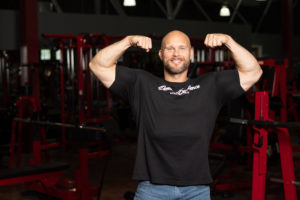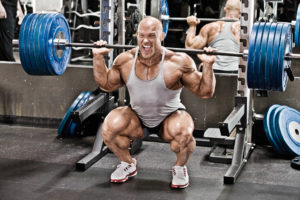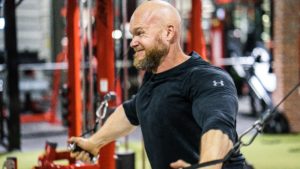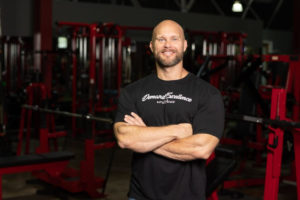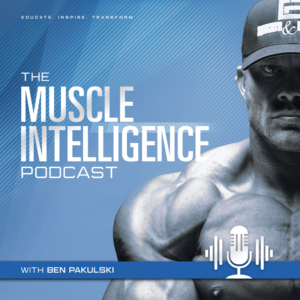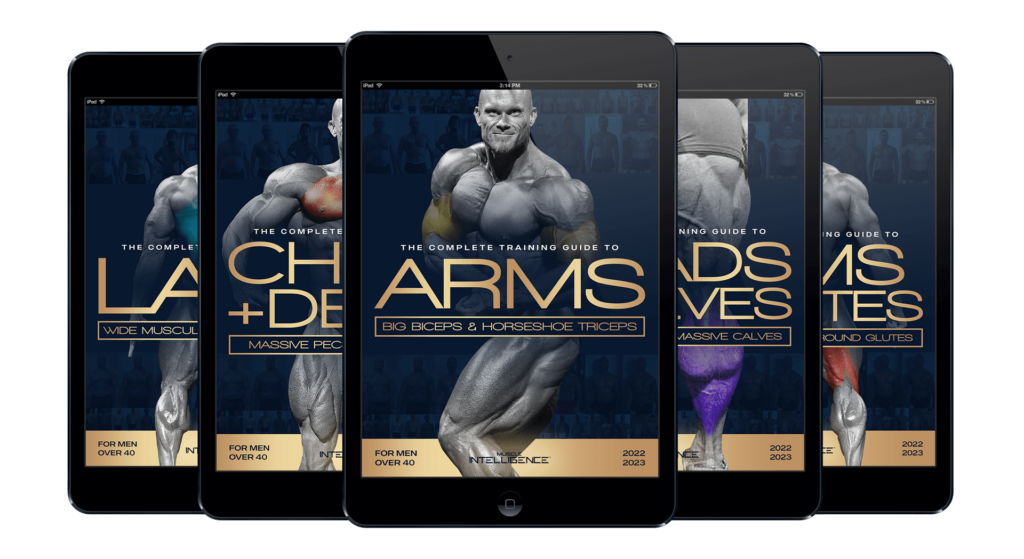By Benjamin Bikman, Ph.D.
Benjamin J. Bikman, Ph.D., a renowned metabolic research scientist, is a popular speaker on human metabolism and nutrition. His book, “Why We Get Sick” offers a thought-provoking yet real solution to the modern plague of insulin resistance and how you can reverse pre-diabetes, improve brain function, shed fat, and prevent diabetes. Dr. Bikman is also a co-founder of HLTH Code, and formulator for its innovative meal replacement shake which is based on his research. You can check out our interview with Dr. Bikman here, and use code MUSCLE10 to get 10% off any HLTH Code products.
Protein enjoys a lofty position in human nutrition. Over the years, protein’s status has only increased—people seek protein and food manufacturers are eager to advertise protein in their foods. And rightly so. We need protein—literally. Essential amino acids are a vital part of human nutrition. Dietary protein promotes optimal health in countless ways: promoting satiety (that feeling of being full or satisfied) [1], helping weight loss [2], increasing metabolic rate[3], and used as building blocks for dozens of hormones.
With all this focus on protein, it’s little surprise that there are a lot of options on where we get our protein. Let’s take a deeper look.
Quality
Any animal-based protein is superior to any plant-based protein. Whether it’s meat, dairy, or eggs, the protein will be both more “complete” and better absorbed and used by the body than all plant-based proteins, such as pea and soy [4].
Plant proteins have antinutritional factors.
This may seem like the stuff of myths, but it’s real: plants naturally have molecules in them that may partially block the digestion and use of nutrients. Molecules like trypsin inhibitors and tannins can block up to 50% of the digestion of proteins from sources like soy, wheat, pea, and more [5, 6].
Plant proteins have heavy metals.
Because plants naturally have so little protein, you need to concentrate them in order to get enough protein to make it count. In other words, you may need to extract protein from 1000 peas in order to get a serving of protein. That’s the good part—the protein. Unfortunately, with all that concentrating, you end up getting a lot of things you don’t want.
Plants naturally draw in minerals from the soil. Due to their molecular weight, some of these minerals are called “heavy metals” and include such villains as lead and arsenic. Once ingested, these metals flow with our blood, eventually settling into organs throughout our bodies, including the kidneys, liver, lungs, bones, and more [7].
Normally, the plants we eat contain very, very little heavy metals. However, when we concentrate plants for their protein, we inadvertently concentrate these heavy metals, as well. Recently, a not-for-profit group called The Clean Label Project analyzed common dietary proteins for these metals and the results were enlightening: the worst performing proteins (i.e., the most metals) were plant-based, while the best (i.e., the least metals) were animal-based.
Protein works better with fat.
One of the primary reasons people focus on protein in the diet is to help maintain or develop muscle mass. And rightly so! Having adequate muscle is one of the best deterrents to mortality—we fight off aging and even death better with more muscle [8]. Given this, wouldn’t you want to know if you could help the protein you eat work better?
After we exercise, our muscles grow, albeit too slightly to notice. In a laboratory setting, we can actually take a small biopsy of the muscle and measure the degree to which the muscle makes new muscle protein (i.e., gets bigger). By giving people a load of protein, we can increase this muscle protein growth following exercise. However, by giving people protein AND fat, in a balance of 1:1, we can actually make the muscle protein growth go beyond the protein alone [9]! Yep, protein + fat does a better job than protein alone.
This synergy that comes from protein+fat is reflected in nature; the best sources of protein, such as whey, egg white, and beef, always come with fat!
References
- Veldhorst, M., et al., Protein-induced satiety: effects and mechanisms of different proteins. Physiol Behav, 2008. 94(2): p. 300-7.
- Simpson, S.J. and D. Raubenheimer, Obesity: the protein leverage hypothesis. Obes Rev, 2005. 6(2): p. 133-42.
- Halton, T.L. and F.B. Hu, The effects of high protein diets on thermogenesis, satiety and weight loss: a critical review. J Am Coll Nutr, 2004. 23(5): p. 373-85.
- Hoffman, J.R. and M.J. Falvo, Protein – Which is Best? J Sports Sci Med, 2004. 3(3): p. 118-30.
- Sarwar Gilani, G., C. Wu Xiao, and K.A. Cockell, Impact of antinutritional factors in food proteins on the digestibility of protein and the bioavailability of amino acids and on protein quality. Br J Nutr, 2012. 108 Suppl 2: p. S315-32.
- Clemente, A., et al., Eliminating anti-nutritional plant food proteins: the case of seed protease inhibitors in pea. PLoS One, 2015. 10(8): p. e0134634.
- Gillis, B.S., Z. Arbieva, and I.M. Gavin, Analysis of lead toxicity in human cells. BMC Genomics, 2012. 13: p. 344.
- Fukasawa, H., et al., Lower thigh muscle mass is associated with all-cause and cardiovascular mortality in elderly hemodialysis patients. Eur J Clin Nutr, 2017. 71(1): p. 64-69.
- van Vliet, S., et al., Consumption of whole eggs promotes greater stimulation of postexercise muscle protein synthesis than consumption of isonitrogenous amounts of egg whites in young men. Am J Clin Nutr, 2017. 106(6): p. 1401-1412.



